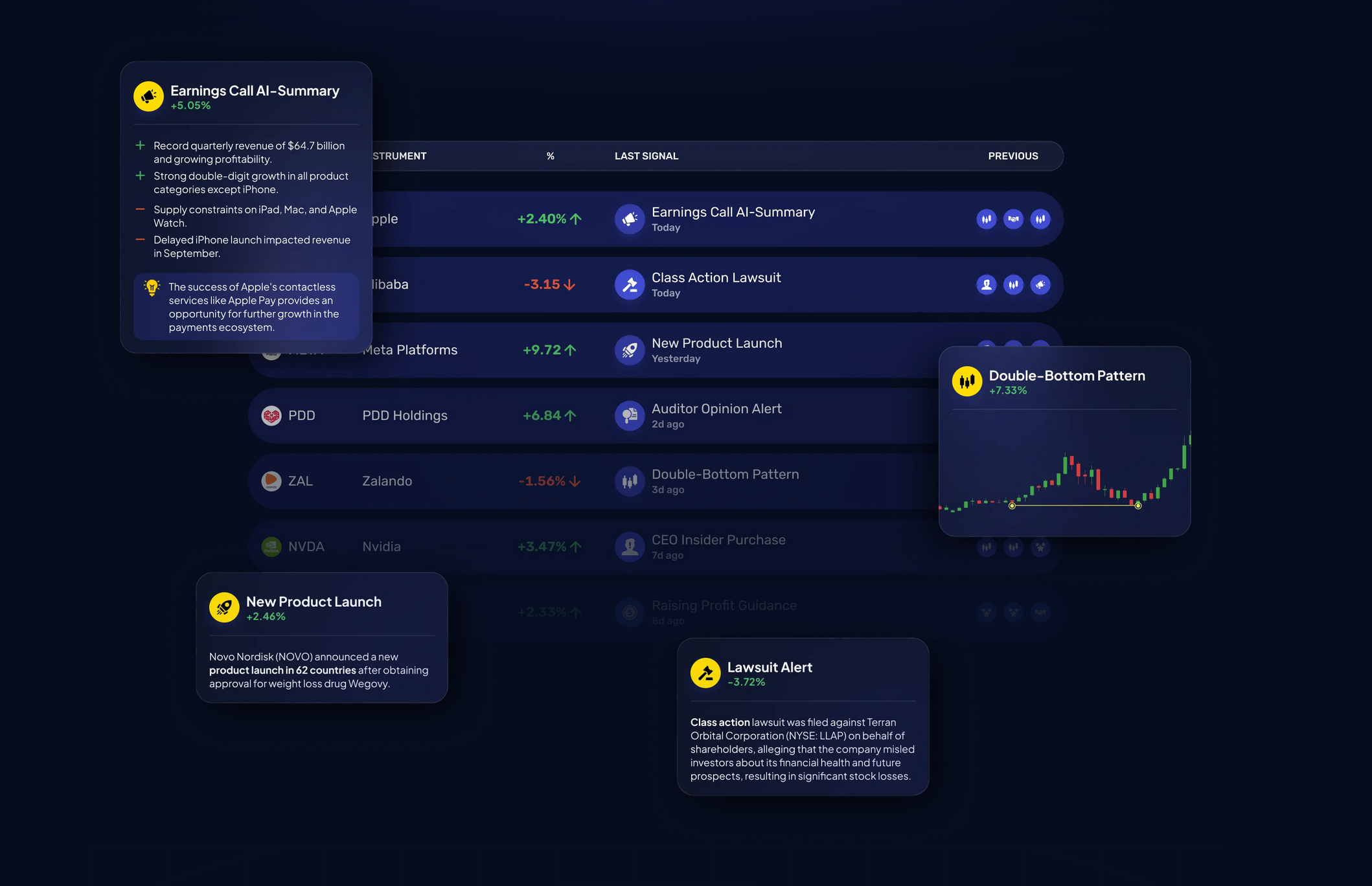Assessing the AI and machine learning (ML) models used by trading and stock prediction platforms is crucial to ensure they deliver precise, reliable, and useful insights. Overhyped or poorly designed models can lead flawed predictions, or even financial losses. Here are 10 best suggestions to assess the AI/ML capabilities of these platforms.
1. The model's design and its purpose
Clarity of goal: Decide whether this model is designed for trading in the short term or long-term investment and risk analysis, sentiment analysis etc.
Algorithm transparency: See if the platform reveals the types of algorithm used (e.g. Regression, Decision Trees, Neural Networks, Reinforcement Learning).
Customizability: Determine if the model is able to adapt to your particular trading strategy or risk tolerance.
2. Evaluation of Model Performance Metrics
Accuracy Test the accuracy of the model's predictions. Don't rely only on this measurement, however, as it may be inaccurate.
Recall and precision. Examine whether the model is able to accurately predict price fluctuations and minimizes false positives.
Risk-adjusted gains: Determine whether the forecasts of the model can lead to profitable transactions, after taking into account the risk.
3. Test the Model with Backtesting
Performance from the past: Retest the model by using data from historical times to see how it performed under different market conditions in the past.
Test the model on information that it hasn't been taught on. This will help to prevent overfitting.
Scenario analysis: Examine the model's performance in different market scenarios (e.g. bull markets, bears markets high volatility).
4. Be sure to check for any overfitting
Overfitting Signs: Look out for models that do exceptionally well when trained but poorly with untrained data.
Regularization: Check whether the platform is using regularization methods such as L1/L2 and dropouts to avoid excessive fitting.
Cross-validation (cross-validation): Make sure your platform uses cross-validation to assess the generalizability of the model.
5. Assess Feature Engineering
Relevant features: Determine whether the model incorporates relevant features (e.g., volume, price sentiment data, technical indicators, macroeconomic factors).
Select features: Ensure the platform only selects statistically significant features and does not contain redundant or irrelevant information.
Updates to dynamic features: Determine whether the model is adjusting over time to new features or changing market conditions.
6. Evaluate Model Explainability
Interpretability: The model should give clear explanations of its predictions.
Black-box models: Be wary of systems that employ excessively complicated models (e.g., deep neural networks) with no explainability tools.
User-friendly Insights: Make sure that the platform provides useful information in a format that traders are able to easily comprehend and utilize.
7. Assessing the Model Adaptability
Changes in the market: Check if the model can adapt to changes in market conditions, such as economic shifts and black swans.
Continuous learning: Find out if the platform continuously updates the model to incorporate new data. This can boost performance.
Feedback loops: Ensure that the platform includes feedback from users as well as real-world results to help refine the model.
8. Examine for Bias and fairness
Data bias: Make sure that the training data are representative of the market and are free of bias (e.g. excessive representation in certain times or in certain sectors).
Model bias: Find out if you can actively monitor and mitigate biases that exist in the predictions of the model.
Fairness: Ensure that the model does favor or not favor certain trade styles, stocks or even specific sectors.
9. Evaluate Computational Efficiency
Speed: Determine whether the model is able to make predictions in real-time or with a minimum of latency. This is particularly important for traders with high frequency.
Scalability - Make sure that the platform can handle large datasets, multiple users and not degrade performance.
Resource usage : Check whether the model is optimized to use computational resources effectively (e.g. GPU/TPU).
10. Review Transparency and Accountability
Model documentation: Make sure the platform has comprehensive documentation about the model's structure and the training process.
Third-party validation: Find out whether the model was independently verified or audited by an outside party.
Error handling: Verify that the platform has mechanisms to identify and fix mistakes or errors in the model.
Bonus Tips:
Case studies and user reviews: Research user feedback and case studies to gauge the model's real-world performance.
Trial period: Use the free demo or trial to test the model and its predictions.
Customer support - Make sure that the platform has the capacity to offer a solid support service to help you resolve technical or model related issues.
Following these tips can help you assess the AI models and ML models that are available on platforms for stock prediction. You'll be able to determine whether they are honest and trustworthy. They must also be aligned with your trading objectives. Check out the top ai for stock trading for more info including trading ai, ai trading, ai for stock predictions, ai for investing, ai trade, ai trading, best ai trading app, ai investment app, ai for investing, ai investing and more.

Top 10 Tips For Assessing The Reputation, Reviews And Evaluations Of Ai Stock Trading Platforms
Examining reviews and reputation of AI-driven stock prediction systems and trading platforms is vital for ensuring trustworthiness, reliability, and effectiveness. Here are 10 top tips to evaluate their reputation and reviews.
1. Check Independent Review Platforms
Reviews can be found on trusted platforms like G2, copyright or Capterra.
Why? Independent platforms allow users to provide feedback that is unbiased.
2. Analyze user testimonials and cases studies
You can find user testimonials or case studies on the site of the platform and also on third-party sites.
The reason: They offer insight into performance in the real world and satisfaction of users.
3. Review of Expert Opinions, Industry Recognition
Tips: Check to see whether reliable media outlets, industry analysts, and financial experts have been recommending or reviewed a platform.
Expert endorsements give credibility to the claims made by the platform.
4. Social Media Sentiment
TIP: Check the social media sites (e.g., Twitter, LinkedIn, Reddit) for the opinions of users and discussions about the platform.
Why? Social media gives unfiltered opinions and trends about the status of the platform.
5. Verify Compliance With Regulatory Rules
Verify that your platform is compliant to financial regulations, like SEC and FINRA, or data privacy laws, like GDPR.
What's the reason? Compliance assists in ensuring that the platform operates legally and ethically.
6. Transparency in Performance Metrics
Tip: Look for transparent performance metrics on the platform (e.g. accuracy rates and ROI).
Transparency is important because it builds trust, and lets users assess the performance of the system.
7. How to Evaluate Customer Support
You can read reviews to find out how responsive and efficient the customer service is.
The reason: A reliable support system is crucial to resolve issues and ensuring a positive user experience.
8. Red Flags should be checked in reviews
TIP: Watch out for complaints that are frequent, such as ineffective performance, hidden charges or insufficient updates.
Why: Consistently low feedback could signal an issue with the platform.
9. Evaluation of User Engagement and Community Engagement
Tip: Make sure the platform is actively used and engages regularly with its users (e.g. forums, Discord groups).
Why is that a strong user base is a sign of satisfaction and support.
10. Learn more about the past performance of the company
Find out the history of the company including leadership, previous performance and prior achievements in the financial tech space.
Why? A documented track record can increase confidence in the platform’s reliability and knowledge.
Bonus Tips: Compare Multiple Platforms
Compare reviews and reputations of multiple platforms to identify the one that is best suited to your requirements.
With these suggestions You can examine and evaluate the reputations and reviews of AI-based software for trading and stock prediction to ensure that you select an effective and reliable solution. Have a look at the top rated here on how to use ai for stock trading for more advice including ai in stock market, chart analysis ai, how to use ai for stock trading, free ai tool for stock market india, free ai tool for stock market india, ai share trading, ai options trading, can ai predict stock market, AI stock investing, ai share trading and more.
